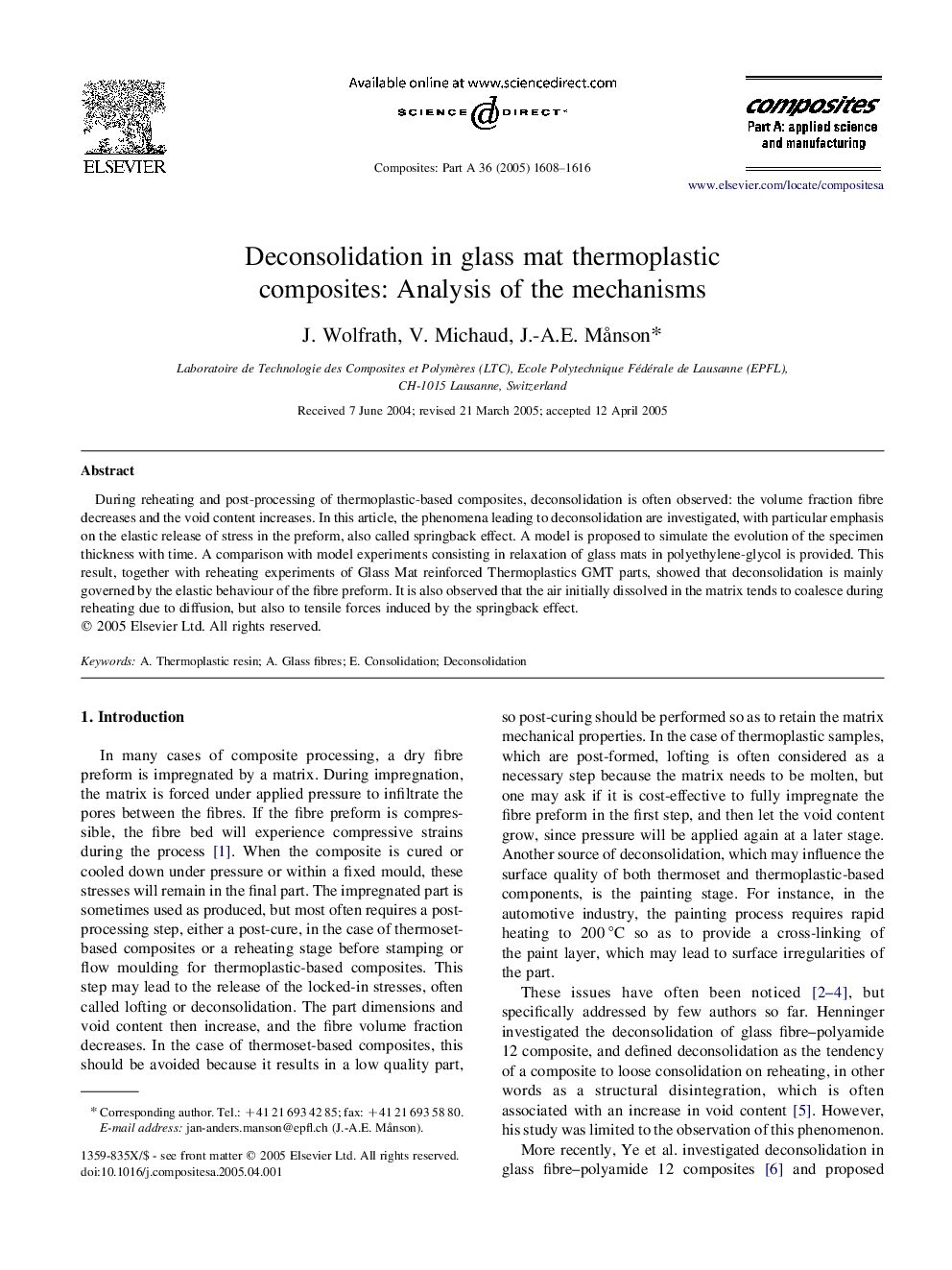| Article ID | Journal | Published Year | Pages | File Type |
|---|---|---|---|---|
| 10628055 | Composites Part A: Applied Science and Manufacturing | 2005 | 9 Pages |
Abstract
During reheating and post-processing of thermoplastic-based composites, deconsolidation is often observed: the volume fraction fibre decreases and the void content increases. In this article, the phenomena leading to deconsolidation are investigated, with particular emphasis on the elastic release of stress in the preform, also called springback effect. A model is proposed to simulate the evolution of the specimen thickness with time. A comparison with model experiments consisting in relaxation of glass mats in polyethylene-glycol is provided. This result, together with reheating experiments of Glass Mat reinforced Thermoplastics GMT parts, showed that deconsolidation is mainly governed by the elastic behaviour of the fibre preform. It is also observed that the air initially dissolved in the matrix tends to coalesce during reheating due to diffusion, but also to tensile forces induced by the springback effect.
Related Topics
Physical Sciences and Engineering
Materials Science
Ceramics and Composites
Authors
J. Wolfrath, V. Michaud, J.-A.E. MÃ¥nson,
